Anne Boleyn and Stormy Daniels: The Revenge of the “Bad Girls”
Trump, like Henry VIII, has enjoyed an unimpeded tyranny over our system of justice. If Stormy pulls him down off his throne Anne will be smiling.
“Our Default Anne”
Before you read any more, a little quiz.
How many of the “facts” in the following image from “Interesting-fact.com” are true?
The answer to my quiz: JUST ONE of these “interesting facts” is true.
Anne was indeed one of King Henry VIII’s six wives.
She did not have six fingers on one hand, let alone both. And no extra nipple. Those colorful details were supplied by Catholic propagandist Nicholas Sander, writing half a century after Anne’s death. Sander probably never saw Anne dressed, let alone naked (he was a small child when she was executed.) But he had an agenda. Anne had been an evangelical who criticized the abuses of the Catholic Church, promoted the English-language bible, and disputed the authority of priests and pope to interpret scripture for us. (Yes, a bit different from the current “evangelicals” who have made Donald Trump their God.) And Sander, who had been exiled by Anne’s daughter Elizabeth I, saw Anne’s body as the gateway that lured Henry VIII through the doors of heresy. In Schismatis Anglicani (The Rise and Growth of the Anglican Schism), he wrote that Anne, besides having slept with most of the French court, was actually the daughter of Henry VIII and Anne's own mother. He was so steamed up with anti-Anne animus that he saw no contradiction in claiming that her desirable body was also marked with the outward manifestations of her league with Satan:
Anne Boleyn was rather tall of stature, with black hair and an oval face of sallow complexion, as if troubled with jaundice. She had a projecting tooth under the upper lip, and on her right hand, six fingers.
A more accurate picture is supplied by George Wyatt, grandson of one of Anne’s early admirers, the poet Thomas Wyatt. In 1623, George gave his nephew a manuscript that he had written some twenty-five years earlier, in which, drawing on the reports of relatives and friends who had actually known Anne, he writes that although Anne was a “rare and admirable beauty,” she was not without flaws: Her coloring was “not so whitely” as was then esteemed and she had several “small moles . . . upon certain parts of her body.” Wyatt also writes that “[t]here was found, indeed, upon the side of her nail upon one of her fingers, some little show of a nail, which was yet so small, by the report of those that have seen her, as the workmaster seemed to leave it an occasion of greater grace to her hand.”
The projecting tooth and extra nipple (perhaps morphed from the “small moles”) have faded from the popular imagination, which—erasing Sanders’ contradiction between seductive temptress and Devil’s deformed handmaiden—has generally portayed Anne as a great beauty. But that sixth finger just won’t let go. By the 19th century, it had become a “fact” that even today many people remember as among the first things they learned about Anne. At the beginning of every talk I gave when I was doing a book tour for The Creation of Anne Boleyn, I asked audiences what they know about Anne Boleyn. Invariably, several members of the audience shouted out, “She had six fingers!” A girls’ magazine feature giving inspiration for girls to “love their bodies” presents Anne and her extra finger (and the extra nipple, too!) as a role model.At least one well-known portrait, once hanging in Ludlow Castle and now privately owned, prominently features Anne with six fingers on each hand, and one of the more imaginative histories cites her “malformed hand” as the reason she was kept out of sight in France
until a suitable husband could be contracted. Anne’s sixth finger is even mentioned in the movie Steel Magnolias when the women in Truvy’s beauty shop banter through the bathroom door.
Anne did not have six fingers. Since Anne’s death, the bodies buried in the chapel of St. Peter ad Vincula have been exhumed and none of the skeletons have shown evidence of a sixth finger. Anne was also not tried for witchcraft but for adultery, incest and treason. It’s true that Henry, eager to be rid of his second wife and carry on with Jane Seymour, claimed at one point that he had been bewitched by Anne. But that was a notion that, as in our own time, was freely bandied about in a very loose, metaphorical manner. It could mean simply “overcome beyond rationality by her charms” — as Eustache Chapuys (another architect of anti-Anne mythology) meant when he complained, in one of his many poisonous letters home, that the “accursed Lady has so enchanted and bewitched him that he will not dare to do anything against her will.”
The “Interesting Facts” turn out to be bits and pieces of misinformation, right down to that kitchen knife. Anne was not beheaded by a Home Shopping Network Special or even by the more usual axe, but by an extremely precise sword, brought from France by a skilled French executioner. It seems to be the only mercy Henry extended to Anne. On May 19, 1536, she became the first Queen in English history to be executed. She died with many enemies, mostly Catholic, who described her as a scheming harpy, “goggle-eyed whore” and Lutheran heretic, who ensnared Henry with her French ways.
Although the “heretic” part has faded, the scheming, ambitious temptress mythology followed Anne through much of history. “Incredibly vain, ambitious, unscrupulous, coarse, fierce, and relentless." The description comes from Paul Friedman's 1884 biography. But fans of Philippa Gregory will find her reincarnated as the sister from hell of The Other Boleyn Girl. In David Starkey's 2004 Six Wives, she is a vicious, vengeful harpy who "hardened" Henry's heart and judgment and who "rejoiced" when her enemies were "hunted down." And most recently, she has slithered her way into the higher literary reaches of Hilary Mantel's Wolf Hall and Bring Up the Bodies, where she appears as a predatory, anxious schemer with "a cold slick brain behind her hungry eyes.” Mantel’s Anne is described in various reviews as a “sharp-toothed vixen” (The Guardian)”vile and manipulative” (The Telegraph) and so “spitefully ambitious” that “one feels any king would be justified in beheading” her (The Morning Star.) Manipulative. Calculating. Ambitious. Cold-hearted. A social climber who lured Henry into abandoning his faithful, devout wife of 15 years and would stop at nothing to become queen.
Where exactly did Anne the skanky schemer come from? In essence, she is the creation of a many-centuries-long telephone game that turned politically motivated lies into inflammatory gossip and alchemized that gossip into "history." Ironically, that "history" then became the inspiration for fictions -- novels, movies, television shows -- which in turn have assumed the authority of fact for many readers.
The original architect of the prototype was one man: Eustace Chapuys, ambassador of Emperor Charles V at the court of Henry VIII from 1529 through the sixteen tumultuous years that followed. Chapuys was not a historian (a profession that actually didn't exist at the time.) His official job was to report court goings-on to Spain, and to skillfully adjudicate between Henry and Charles. But his personal mission was to protect Katherine of Aragon and the Catholic cause from the turmoil brought about by The King's Great Matter and -- as Chapuys saw it -- the suspiciously "Frenchified" slut who had inspired the divorce proceedings and everything awful that Henry did thereafter: Anne Boleyn.
Chapuys hated Anne with a venom that he didn't even try to disguise, disgustedly referring to her in his official communications as "the concubine" and "that whore" -- or, with polite disdain, "The Lady." Elizabeth was "the little bastard." Everything dishonorable in Henry's behavior, including his shabby treatment of Katherine’s daughter Mary (which actually persisted after Anne's execution), was the fault of Anne's "perverse and malicious nature," "the wickedness of this accursed woman." He was convinced -- and convinced many others at court -- that Anne was continually plotting to murder both Katherine and Mary (no evidence of either). And he even charged Anne with responsibility for spreading the heretical "scourge" of Lutheranism throughout England. For Chapuys, this was equivalent to being pro-devil, as from “anti-papal” to “heretic” to “witch” was a short step.
Chapuys was hardly a credible witness to events. But Katherine's supporters did not ask for proof or logic, and Chapuys, spreading his tales around court and encouraging Katherine and Mary's suspicions of Anne, was able to generate an atmosphere of hostility toward Anne. Centuries later, his lengthy, gossipy letters became the prime source of all the early biographies of Henry and Anne. For narrative abhors a vacuum, and Chapuys was there to dress the slender skeleton of fact with juicy but unsubstantiated adornment. Passed from one generation to another, Chapuys' venomous portrait of Anne's character and her manipulation of Henry crept into later histories, biographies, novels, films, television, and what we might call "the popular imagination."
Later generations, as I chronicle in my book, would try to rehabilitate Anne's image -- often going way too far in the opposite direction and cloaking her with the mantle of Protestant Saint. But Chapuys' Anne is the one that, like Freddy from Nightmare on Elm Street, refuses to die. One might say that she is our default Anne. We stray away from her for a time, but then she pops up again.
And she almost always has a counterpart.
In Anne’s own time, it was Queen Katherine. While Anne was depicted by her enemies as too ambitious, too vocal, and too interfering in matters of state and religion, Katherine behaved like a “true” Queen and a virtuous woman. Unlike French-educated Anne, Katherine had been raised to be chaste, obedient, to speak up “only when it would be harmful to keep silent” and to “administer everything according to the will and command of her husband.” (Those are quotes from Vives, Education of a Christian Woman, written in 1523 for Katherine’s daughter Mary.) In reality, Katherine was quite a powerhouse—and certainly not without ambition. In pro-Catholic mythology, however, she was likened to the Virgin Mary.
More recently, Anne appears as the selfish, treacherous sister in Philippa Gregory’s The Other Boleyn Girl, in which she poaches Henry from her generous, tenderhearted sister Mary and proceeds to tyrannize her (and everyone around her), barking out orders, plotting deaths, appropriating her sister’s child, and—when she miscarries her final pregnancy with Henry—coercing her brother George to have sex with her. Neither “Sleeping Beauty” nor “Cinderella” strike a more clean-cut division between the good and the wicked woman, with Anne playing the role of the wicked witch and Mary the long-suffering, virtuous heroine. And as in any other fairy tale, the good are ultimately rewarded and the evil are punished. Anne, having gone to “the gates of hell” with her brother in order to get pregnant, miscarries a deformed child (an idea that Gregory picked up from Retha Warnicke’s 1989 biography), is accused of witchcraft, and goes to the scaffold (in far less dignified fashion than history records) while Mary, with Elizabeth in her arms, retires to a bucolic life with husband and children.
It got even more extreme when the book was made into a movie. The screenplay, written by Gregory and Peter Morgan (The Queen, The Last King of Scotland, Frost/Nixon), contributed fresh inventions to the story. The newly added fantasies/fictions included a gratuitous (and utterly out-of-character) rape of Anne by Henry, Mary begging Henry for a last-minute pardon for Anne, and a heroic capture of Elizabeth by Mary, who strides into court after Anne’s execution, grabs her niece, and—with the whole court watching and not lifting a finger—leaves the palace with the future queen in her arms. None of it happened. (As Gina Carbone puts it gently in her review, “Let’s just say you shouldn’t watch this and base any Jeopardy answers on it.”) But when I taught courses on the Tudors, I had to spend weeks de-programming students who insisted that everything in the book and movie was based on fact (disinformation that Gregory herself promoted.)
The Madonna/Whore duality doesn’t give up easily.
It’s a favorite of fiction and film.

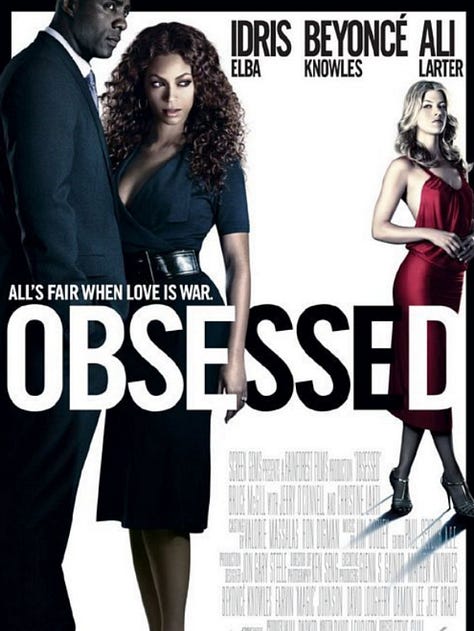
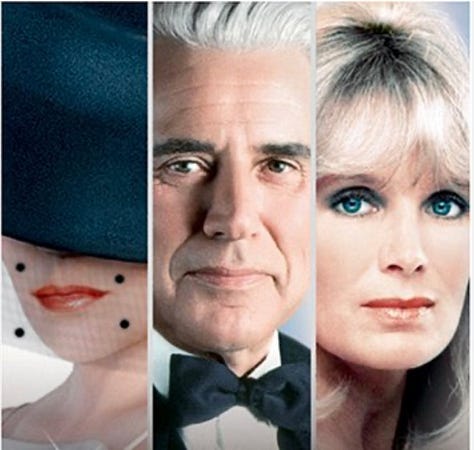
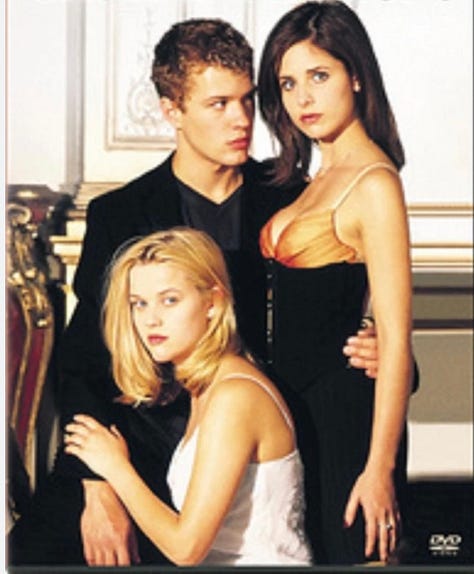

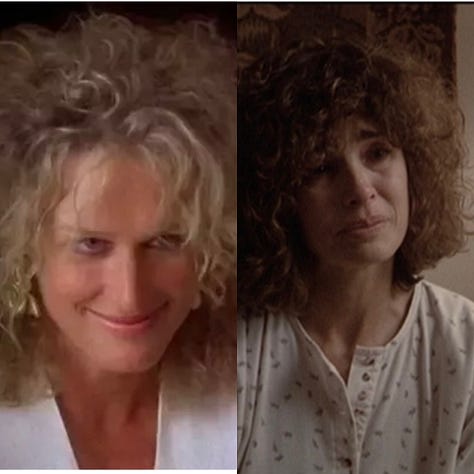
And it manages to creep into mass media representations of real people too—especially when, as in the paradigm case of Anne/Katherine, the sexualized schemer is depicted as trying to steal the man away from the virtuous wife/girlfriend.
Are you ready for a big leap?
When I first announced on Facebook that I was going to be writing a stack with the title “Anne Boleyn and Stormy Daniels: The Revenge of the Bad Girls,” fans of Anne Boleyn were not happy with me. “What?” “Huh?” “No comparison!” But as those of you who are familiar with my previous work know, I hardly ever write about real people, but cultural representations. In The Creation of Anne Boleyn I traced the history of those representations from Chapuys’s letters to Wolf Hall.. In The Destruction of Hillary Clinton, I “deconstructed” the image of Hillary that had been built up from a potent combination of Right Wing strategizing, gendered double-standards, “progressive” campaigns, and—most of all—mass media malpractice. Yes, I said malpractice. And they’re still at it, oblivious (it seems) to the damage they are doing.
So, for example, after Michael Cohen’s cross-examination on Thursday, after a repetitious, boring morning, all the commentators were delighted to finally have a “stunning moment” to report. And report. And report. And chew over how “severely damaging” it was. They had trouble containing their excitement. (I’ve italicized and bolded to make this point clear.)
CNN Live Event/Special
Soon: Trump Defense Resumes Cross-Examination Of Michael Cohen; Stunning Moment With Michael Cohen In Trump Hush Money Trial. Aired 1:30-2p ET
Aired May 16, 2024 - 13:30 ET
ANDERSON COOPER, CNN HOST: This one, Todd Blanche clearly saved this to right before the lunch break. [At first it seemed]…you know, like a ridiculous story, some 14-year-old is sending him nasty text messages and he's going to call Keith Schiller about it. And then you realize, you look at -- he showed the phone logs, that the prosecutor it had shown, and it's the phone call that -- that Michael Cohen had previously talked about.
I think it is severely damaging to Michael Cohen's testimony.
Kara, you are there. What did you think?
We were sitting -- I was sitting in the opposite aisle. So I haven't been able to talk to you. But I found it just so exciting. It was - whatever -- whoever you believe, whatever side, it was just a remarkable moment in court.
KARA SCANNELL, CNN CORRESPONDENT: It truly was. Because it was really just kind of this building crescendo with more of that more mundane questioning of just trying to see if Cohen did lie about multiple things, including whether he wanted a pardon or whether he was accepting responsibility for his guilty plea.
But then it built to that moment where Todd Blanche methodically went through the phone calls, the text messages. And as you were saying, kind of put Michael Cohen in the box and then shut the lid.
Because it was -- and Blanche added to it by being himself more theatrical about it. He's pacing, he's rubbing his head, he's swailling his arms. His voice is rising as he is being incredulous.
Saying to Cohen, are you -- do really expect me to believe that in that one-minute, 36-second phone call you talk to Keith Schiller about the harassing text messages and phone calls, and also to Donald Trump about Stormy Daniels where you told him it was resolved… And Cohen, while he maintained his composure, he certainly didn't look like he had a lot of confidence in his answers there. And then he just built and built and built by showing those text messages, showing the call logs.
And then, at the end, where he left the jury with it after that big moment, he then said, you know, so I don't want what you think he remember. I want -- the jury needs to know what you know and what you definitely remember.
And then he left it hanging in the air, did -- was this true for all of the phone calls that Cohen recalled in 2016?…..
We're going to take a short break, really just a remarkable close of this session in court.
After a full day and a half of this we finally got more judicious analysis of that “stunning moment” (that involved one phone call out of several in which Cohen discussed the upcoming payment to Stormy and that the prosecution is likely to “clean up” with ease in a redirect or a closing.) But of course, by then, most viewers had been led to believe that Michael Cohen’s credibility was “severely damaged”—just because the defense had gotten loud and woken everyone up.
Because I was simultaneously thinking about what I was doing for my next stack on Anne Boleyn (this is Anne Boleyn month here on BordoLines) and watching the trial, I couldn’t help but notice how the good girl/bad girl duality was playing out in representations of Hope Hicks and Stormy Daniels. Hicks: the devoted “girl Friday” who didn’t enjoy publicity (I don’t think I’d even heard her voice once during her time with the Trump administration), who announced to the courtroom how nervous she was, and whose big moment for the media was when she broke down in tears when asked about her relationship with the Trump family.
And then there was Stormy, whose name had been constantly prefaced by “porn star” (earlier headlines often didn’t even include her name) and who had to be cautioned not to provide any “salacious” details about her night with Trump. (The mass media, apparently, only knows has that one word—“salacious”—in its vocabulary when talking about Stormy’s testimony, and couldn’t stop using it, even about details that were more humiliating to Trump than sexually steamy. Silk pajamas? Boxer shorts? A spanking with a magazine. Salacious? Really?)
Not just the defense but the prosecution was oh-so-gentle with Hicks, even as she waffled and alluded vaguely to being “concerned” about the Access Hollywood tape: “It’s hard to describe. It’s hard to describe. It was definitely concerning.” Uh, can you be more explicit? But Hope was “vulnerable” and prosecutors were careful not to “disrupt her testimony without coming off as too aggressive and alienating sympathetic jurors.”
The defense showed no such concern for the “porn star.” Necheles came right at her; virtually every question was not just to throw doubt on Daniel’s account, but to impugn her character: “That motivates you a lot in life, making more money, right?“ “You despise Trump, and you made fun of how he looks, right?” “You’re making this up as you sit there, right?” “You were looking to extort money from President Trump, right?”


Necheles believed she could come at Stormy hard because, in direct contrast to the presumption that the Jury would have sympathy for “publicity-shy”, unblemished Hope Hicks, she expected the jury to have little concern—perhaps even to enjoy—watching her take down a woman already dirtied in their eyes by her “salacious” occupation.
Personally, Stormy won me over by her courage (if you doubt that it took guts to stand up against Trump, read her book—or just consider the toadying Republican Party), her smarts (again, check out her book) and sense of humor (“If that story was untrue, I would have written it to be a lot better.” Daniels told Necheles when accused that she made up the affair), and her love of horses (personal bias.) Hope Hicks? For me, her defining moment was not when she cried but her email recommendation, when sent a transcript of the Access Hollywood tape, to “deny, deny, deny.” Wonder why the media didn’t give it the same headline attention that they gave her tears? Much has been made of her “loyalty” to Trump; less of what she did to protect him. She’s always been that well-groomed, virtually blank presence at his side. “Deny, deny, deny” reveals she wasn’t quite the silently obedient “girl Friday” she’s been portrayed as.
The good girl/bad girl dualities are always fictions that rarely remain constant. Anne Boleyn has shape-shifted numerous times throughout the centuries. When Elizabeth came to the throne, Anne became for many Protestants the idealized, martyred heroine of the Reformation; for the Romantics, particularly in painting, she was depicted as the sorrowful, hapless victim of a king's tyranny. And when historical fiction became popular, authors won our sympathy by giving Anne an innocent adolescence, ruined by her scheming relatives. Twentieth and twenty-first century fiction and histories, both of Anne and of Katherine, have tried to reverse some of the old stereotypes. (Please do read my book if you’re interested in Anne’s cultural history.)
It didn’t take centuries for followers of the “hush money” trial to protest Necheles’ harsh, “slut-shaming” treatment of Stormy Daniels, who has legions of defenders on social media, many of whom regard her as a heroine. Especially since this will be the only verdict we get before the election—the other trials having been stalled and sabotaged in various ways—if Trump is judged guilty, we will certainly have a lot to thank her for. So far, Trump, like Henry, has enjoyed an unimpeded tyranny over our system of justice. If Stormy pulls him down off his throne Anne will be smiling.


See also:
https://bordocrossings.com/book/the-creation-of-anne-boleyn/
_____________________





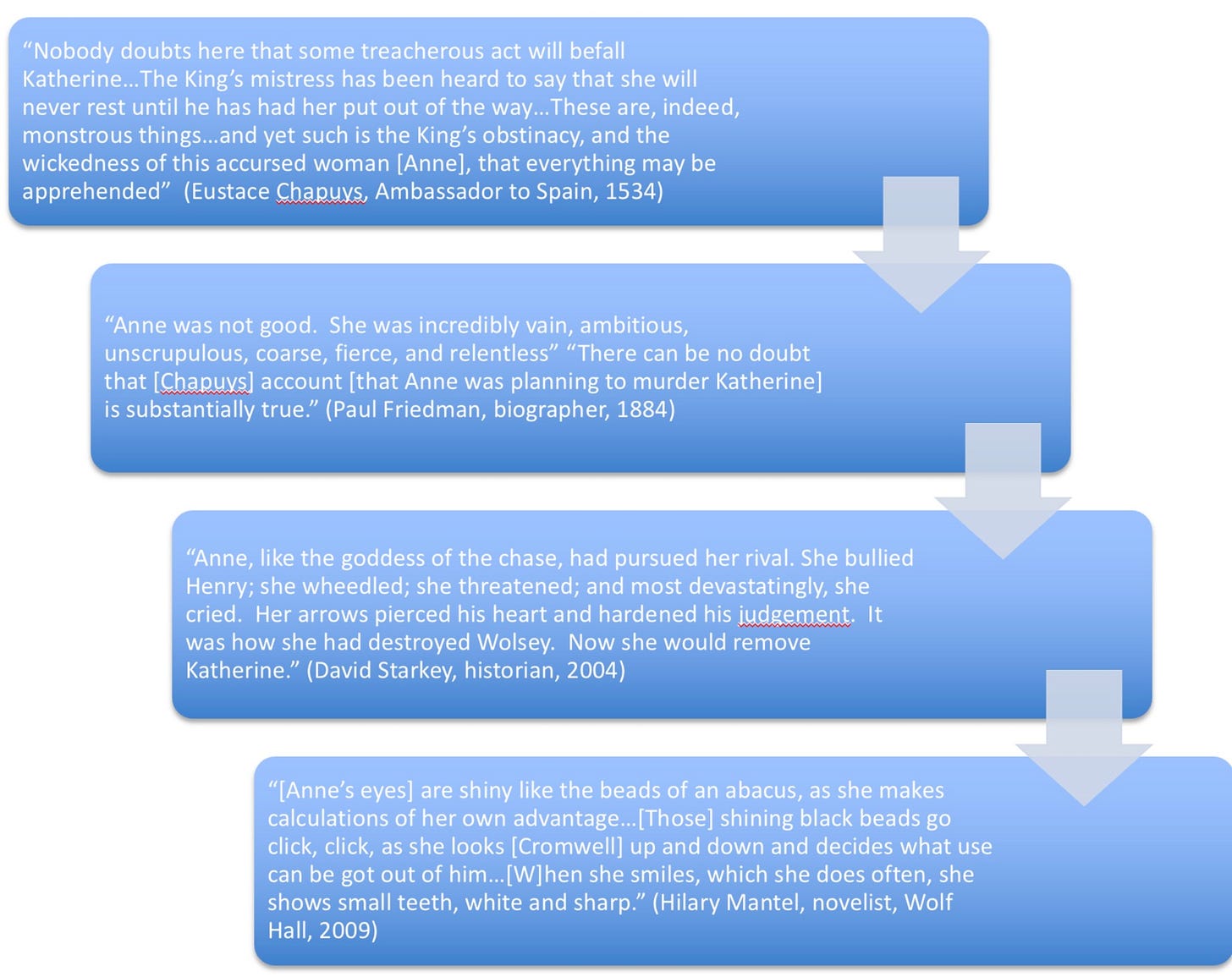

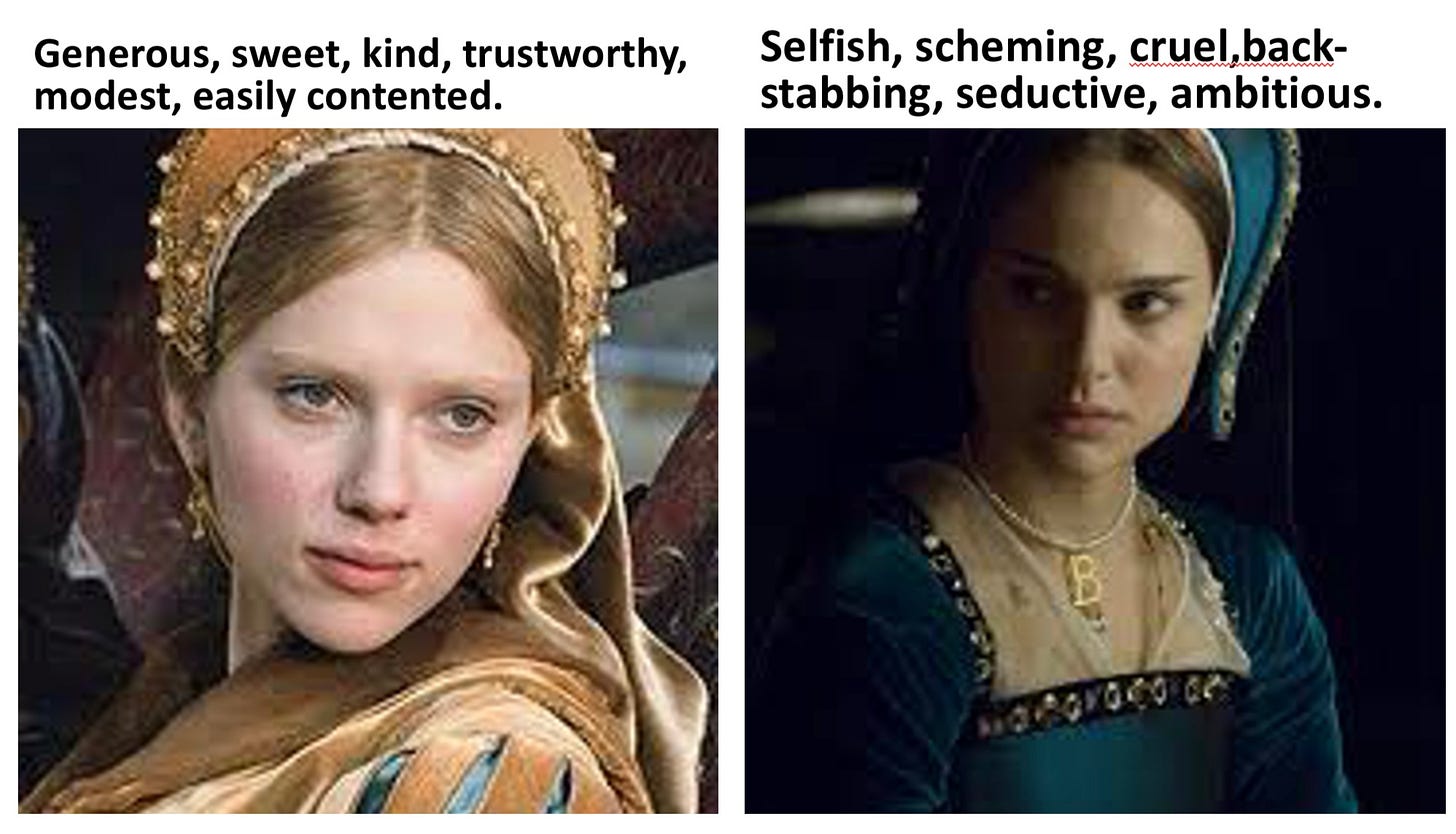
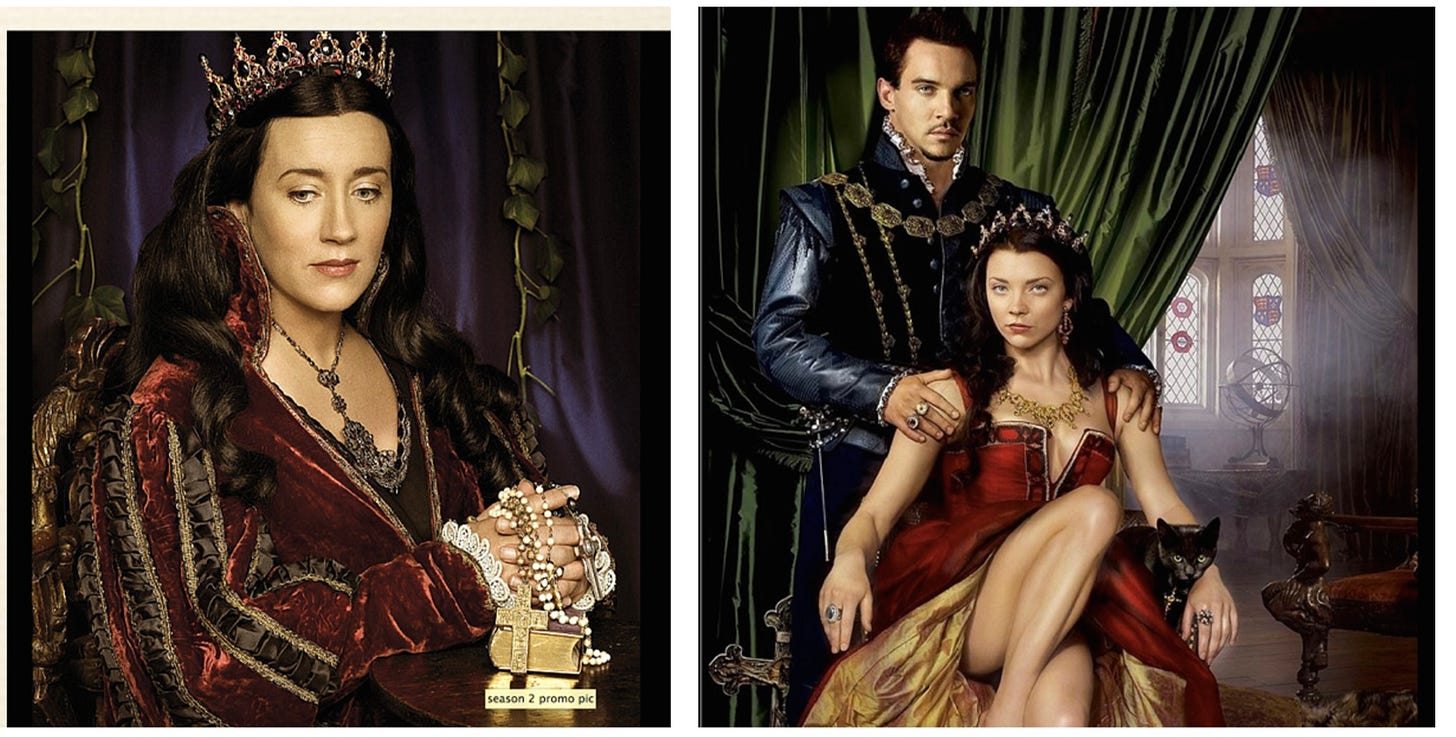

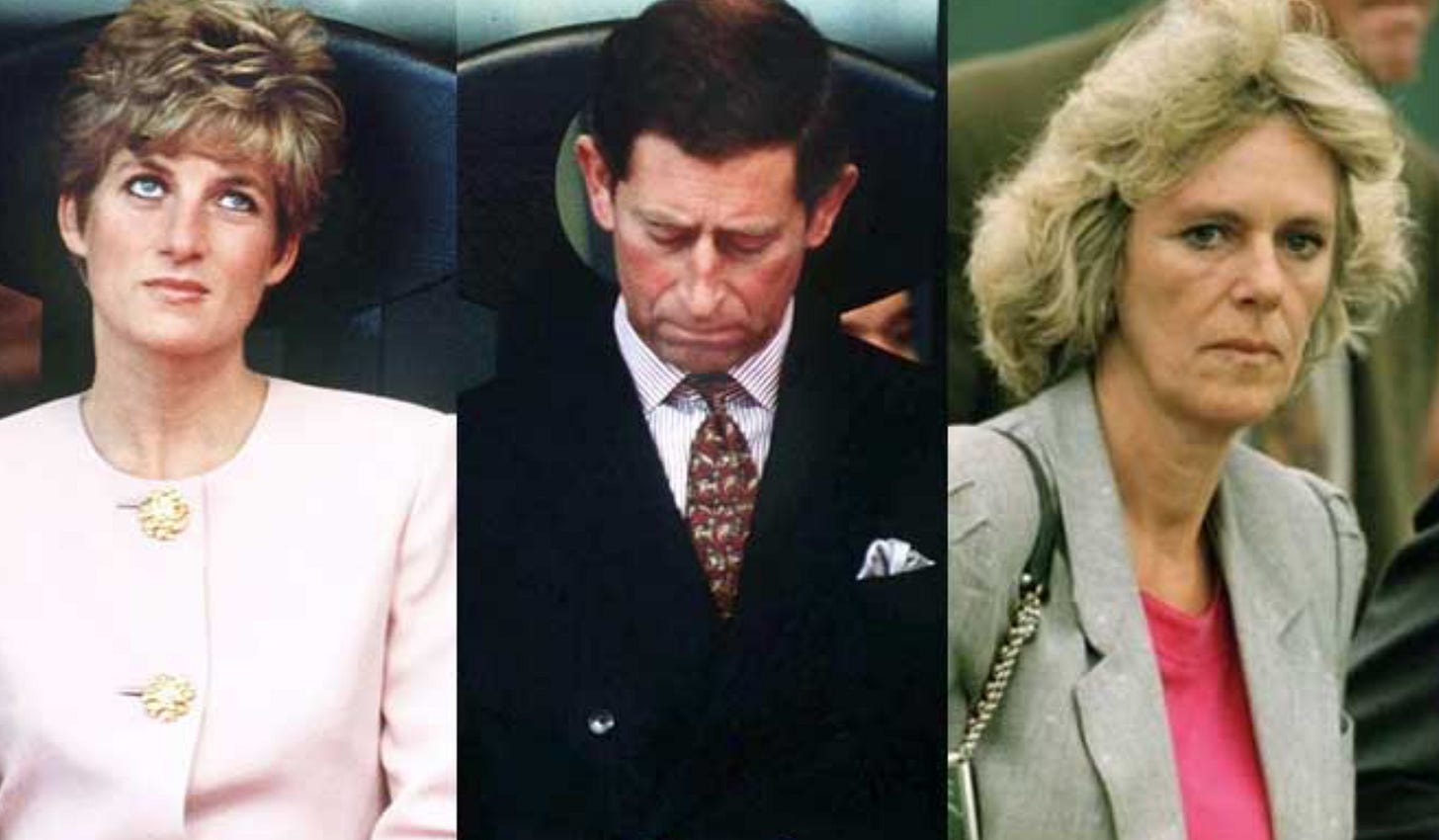








I just recently discovered your stack and am thoroughly enjoying it! I have been fascinated by the Tudors since grade 9 history class. My copy of "The Ceation of Anne Boleyn" arrived an hour ago. Can't wait to dive in!!
Distorted history in historical fiction infuriates me. And you demonstrate so well how, contemporaneously, the historical record gets perceptually formed. Thank you.